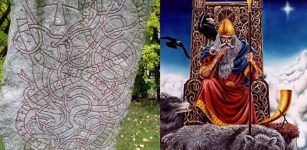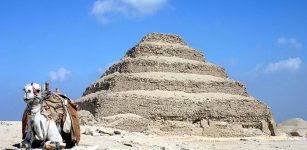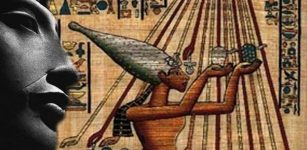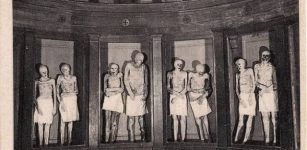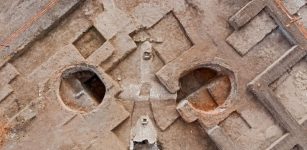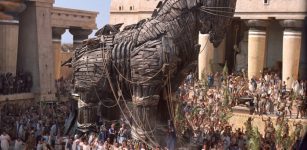Famous Ancient Hittite Figures And Symbols Engraved In Stone By A Local Artist From Çorum Province, Anatolia
Conny Waters – MessageToEagle.com – A man, living in the Central Anatolian province of Çorum, has been engraving symbols and figures unique to the Hittites on stones, with the help of knives and saws he collects from the ancient city of Hattusha.
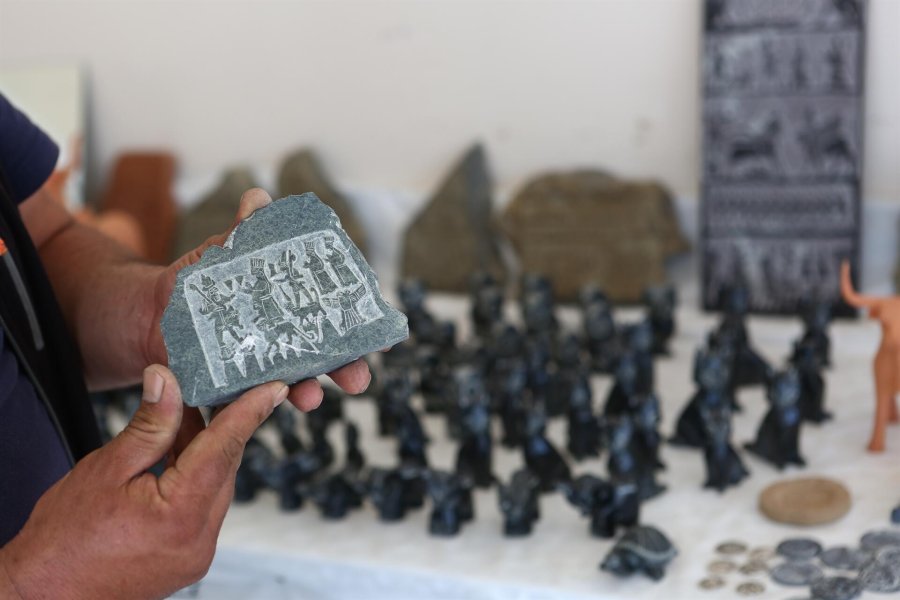
Mustafa Atila had the opportunity to get to know the region, packed with ancient ruins, during his childhood while taking food to his father- who was a watchman for the ancient city. The region has a rich history and has long inspired historians, archaeologists, and ordinary people.
“When I saw the reliefs Hittites engraved to rocks, I said ‘I can engrave these to stones,” Atila said, adding that he started pursuing his art 20 years ago, writes Hurriyet Daily News.
“I was not trained for this, but I believe that I exhibit better craftsmanship than the originals,” he said, adding that he has been earning a livelihood from selling the engraved stones to local and foreign tourists.
See also:
Yazılıkaya: One Of The Most Striking Religious Shrines Of The Hittite Empire
Magnificent Hattusha: Capital Of The Hittite Empire
The Hittites – Rise And Fall Of An Ancient Powerful Empire In Anatolia
Çorum city is mainly known for its Phrygian and Hittite related archaeological sites. Along with its vicinity, the city was the homeland of the Hittites about 3,000 B.C, It then became the center of the civilization around 2,000 B.C.
The artist said that he mostly engrave the Hittite lion, the god of storm Teshub, surrounded by myths and legends that survived in Hittite versions. He also creates engravings depicting the sun goddess Arinna and the royal family on the stones.
“It takes one or one-and-a-half-day to shape and engrave a small stone. Prices vary according to the craftsmanship and the size of the stone,” he added.
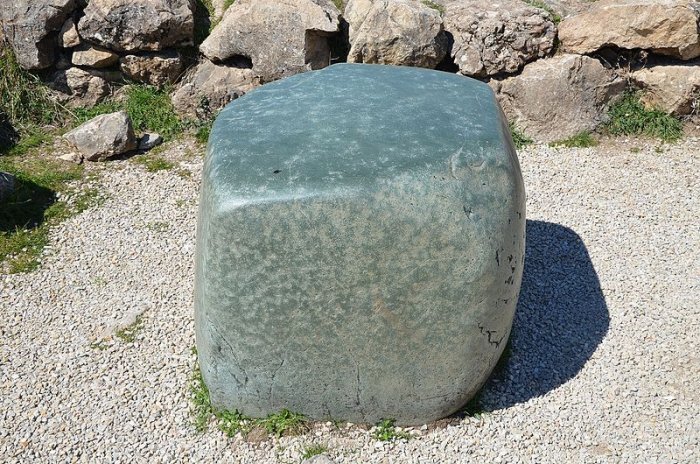
The holy green stone at Hattusa. Credit: Carole Raddato, Public Domain
Noting that the Hittites accepted the green stone as sacred, the artist said that visitors were also interested in green stones. The stone of Hattusa is both beautiful and rare but its history is shrouded in secrets that have never been revealed.
The purpose of the magnificent green stone at Hattusa is still a mystery. The stone is indeed beautiful but it doesn’t have any known valuable properties. The green ock is not mentioned on any stone tablets, and yet it has been held sacred for centuries. Could this be because the green wish stone is different from all others found at the site making it unique?
“Hittites believed that the green stone in the Great Temple, which is said to come from Egypt as a gift, was a holy stone. I use stones similar to him,” Atila said.
Hattusha was included in the World Heritage List by UNESCO in 1986 due to the perfect protection of some structures and architectural communities in its ruins. After that, its cuneiform tablet archives representing the oldest known Indo-European language were also inscribed to the Memory of the World list in 2001.
In the region, the Hittite Dam, one of the first known dams in Anatolia, king and prince tombs, the Lion Gate sphinx and the archaeological excavation site, which is normally open to visitors, are unfortunately experiencing the most silent days in their history. Over 25,000 foreign tourists have come to Çorum to see the unique historical sites last year.
But this year, the number of foreign tourists fell to 2,000 due to the COVID-19 outbreak.
The region has a famous and rich history with its six-kilometer walls surrounding the ancient city, its monumental gates, the 71-meter-long underground passage, 31 temples unearthed so far, the Lion Gate, the King Gate and the Yazılıkaya Open Air Temple, and much more.
Written by Conny Waters – MessageToEagle.com – AncientPages.com Staff Writer

